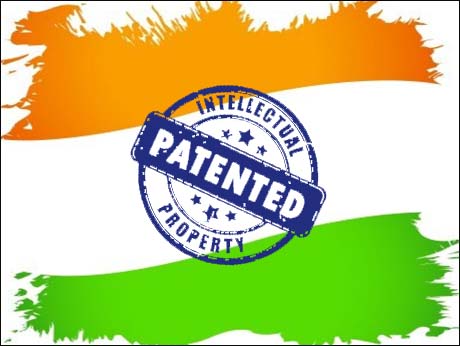
May 14 2016: The Indian union cabinet has approved the National Intellectual Property Rights (IPR) Policy that will lay the future roadmap for intellectual property in India.
The Policy recognises the abundance of creative and innovative energies that flow in India, and the need to tap into and channelise these energies towards a better and brighter future for all.
The National IPR Policy sets in place an institutional mechanism for implementation, monitoring and review. It aims to incorporate and adapt global best practices to the Indian scenario
The Policy recognizes that India has a well-established TRIPS-compliant legislative, administrative and judicial framework to safeguard IPRs, which meets its international obligations while utilizing the flexibilities provided in the international regime to address its developmental concerns. It reiterates India’s commitment to the Doha Development Agenda and the TRIPS agreement.
The broad contours of the National IPR Policy are as follows:
Vision Statement: An India where creativity and innovation are stimulated by Intellectual Property for the benefit of all; an India where intellectual property promotes advancement in science and technology, arts and culture, traditional knowledge and biodiversity resources; an India where knowledge is the main driver of development, and knowledge owned is transformed into knowledge shared.
Mission Statement: Stimulate a dynamic, vibrant and balanced intellectual property rights system in India to:
- foster creativity and innovation and thereby, promote entrepreneurship and enhance socio-economic and cultural development, and
- focus on enhancing access to healthcare, food security and environmental protection, among other sectors of vital social, economic and technological importance.
Objectives:The Policy lays down the following seven objectives:
i. IPR Awareness: Outreach and Promotion - To create public awareness about the economic, social and cultural benefits of IPRs among all sections of society.
ii. Generation of IPRs - To stimulate the generation of IPRs
iii. Legal and Legislative Framework - To have strong and effective IPR laws, which balance the interests of rights owners with larger public interest.
iv. Administration and Management - To modernize and strengthen service-oriented IPR administration.
v. Commercialization of IPRs - Get value for IPRs through commercialization.
vi. Enforcement and Adjudication - To strengthen the enforcement and adjudicatory mechanisms for combating IPR infringements.
vii. Human Capital Development - To strengthen and expand human resources, institutions and capacities for teaching, training, research and skill building in IPRs.
These objectives are sought to be achieved through detailed action points. The action by different Ministries/ Departments shall be monitored by DIPP which shall be the nodal department to coordinate, guide and oversee implementation and future development of IPRs in India.
The National Intellectual Property Rights (IPR) Policy will endeavor for a “Creative India; Innovative India" ( From PIB release )
Full Policy Document here
Media and reactions:
India Inc hails move; pharma firms wary-- Economic Times
New policy retains access to cheap dugs -- The Hindu
India resists pressure from West - IndiaToday
NASSCOM Reaction
NASSCOM welcomes the National IPR Policy and applauds it for encompassing the entire value chain spanning across IPR Awareness, Generation, Legislative Framework, Administration, Commercialization, Enforcement and Adjudication, Human Capital, comprehensively covering all aspects of the domain.
The Policy has reformed the current administration by making Department of Industrial Policy and Promotion the nodal point coordinate and guide future development of IPRs in India while responsibility for actual implementation of the plans of action will remain with the Ministries/ Departments concerned in their assigned sphere of work. This single umbrella approach will help leverage linkages between various IP offices. The proposed Cell for IPR Promotion and Management (CIPAM) to be constituted under the aegis of DIPP, would be an important connection with the inventors and innovators.
NASSCOM had in its interaction with the think tank had highlighted difficulties that companies face in monetizing intangibles like IPR. The Policy has captured the concerns suitably and their proposal to create a ‘simple loan guarantee scheme to encourage start-ups’ based on IPRs as mortgage-able assets; financial support and securitization of IP rights for commercialization by enabling valuation of IP rights as intangible assets through of appropriate methodologies and guidelines, and enabling legislative, administrative and market framework are in the right direction. Further, specific references to promoting use of OSS, as well as support for IPR generation for ICT technologies, including those relating to cyber security for India are welcome.
As product life cycles shrink, timeliness of grant of IPR is critical for its relevance. We welcome the Policies focus on modernization of offices, adoption of service orientation by improving the quality of service, search facilities and information made available to inventors and other stakeholders. Administration and enforcement of IP rights requires time bound processes. The Policy has rightly identified it as a priority area in addition to initiatives outlined for capacity building at various levels including adjudication, enforcement and protection. The IT industry is committed to partner with the DIPP in the modernization efforts. Further, Periodic reviews and updates of IP related rules, guidelines, procedures will ensure an effective IPR regime and NASSCOM is committed to work closely with the DIPP as the policy is implemented to support an innovation led Industry in India.